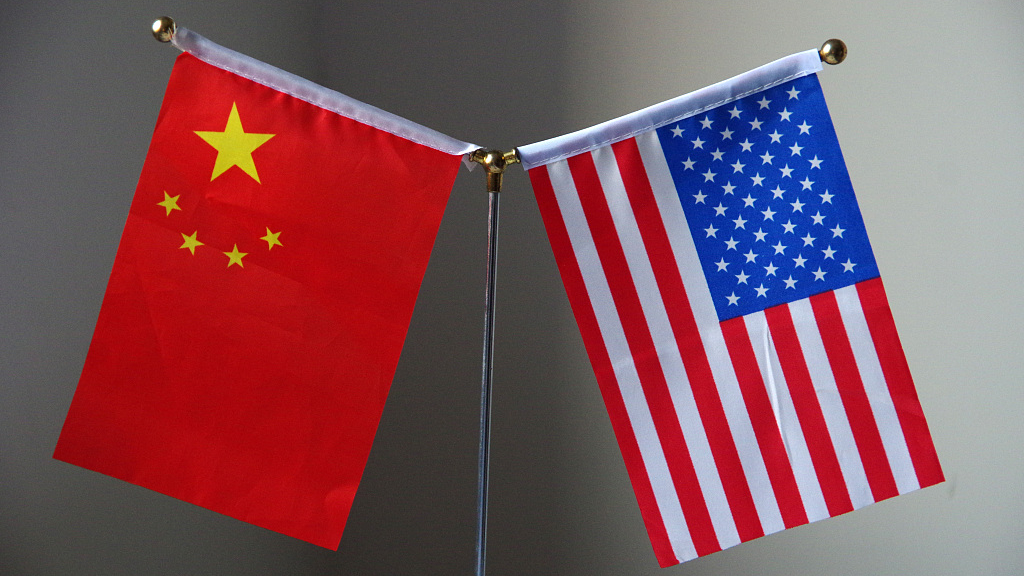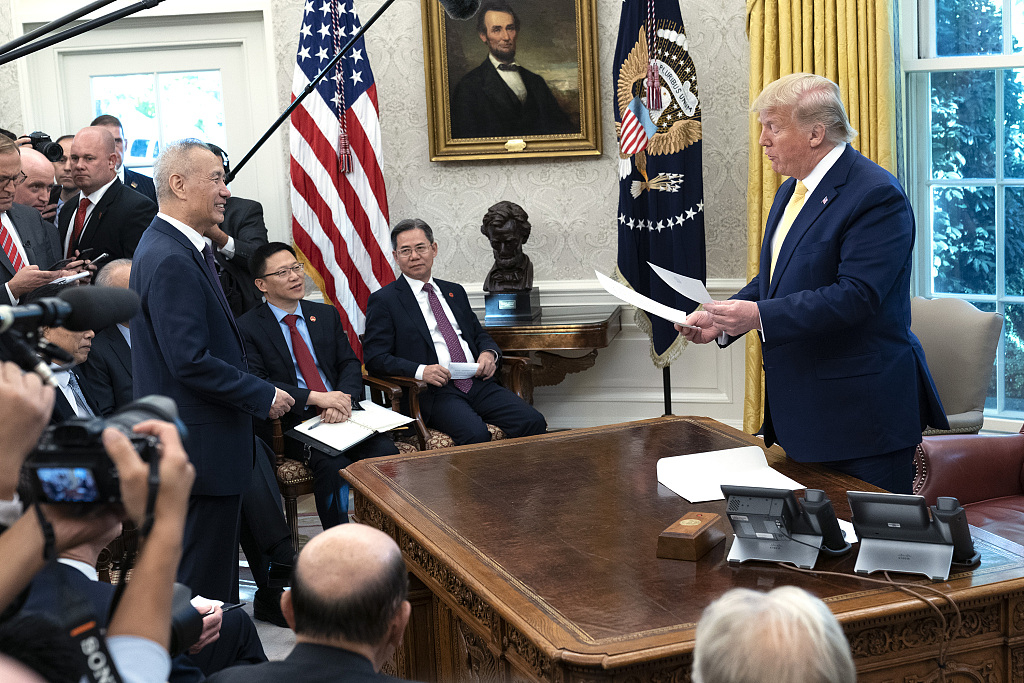
Editor's note: The article was first published by China Plus on October 12, 2019. The article does not necessarily reflect the views of CGTN.
China and the United States concluded their latest round of high-level economic and trade consultations in Washington D.C. on October 11. Under the guidance of the consensus reached by Chinese President Xi Jinping and U.S. President Donald Trump, the two negotiation teams conducted candid, efficient and constructive discussions on economic and trade issues of mutual concern, and made substantial progress in areas including agriculture, intellectual property rights protection, exchange rates, financial services, trade cooperation, technology transfers and dispute settlement. The two sides also discussed arrangements for future talks.
These encouraging results were achieved as the two sides sought practical approaches to gaining common ground. The progress made in this round of talks means that the Chinese and American people, and the global community as a whole, can worry less about a further escalation of the trade tensions between the two countries.
It is impossible for the world's two largest economies to solve their complex trade issues overnight. The twists and turns of the past several months made both sides see more clearly the right path ahead. That is why we see them trying to reach a consensus on the low-hanging fruit as they continue to work patiently towards a final agreement.

U.S. President Donald Trump reads from a note handed to him by Chinese Vice-Premier Liu He, said to be from Chinese President Xi Jinping, at the White House, Washington, D.C, U.S., October 11, 2019. /VCG Photo
U.S. President Donald Trump reads from a note handed to him by Chinese Vice-Premier Liu He, said to be from Chinese President Xi Jinping, at the White House, Washington, D.C, U.S., October 11, 2019. /VCG Photo
Take agriculture as an example: China and the United States are highly complementary in this regard, and cooperation benefits them both. China imports around 90 percent of its soybeans each year, and is facing a temporary undersupply of pork. It's logical that China would look to purchase soybeans and pork from the United States based on market principles and World Trade Organization rules. And these purchases help address Washington's concerns about the trade imbalance with China, and at the same time provide much-needed income for American farmers.
The same logic applies to the currency issue as well. China has made it clear that it will stick to its market-oriented system on exchange rates, never engage in competitive devaluation, never use exchange rates for competitive purposes, and never use its currency as leverage to deal with external fluctuations, including trade frictions. These are all issues on the check list of the negotiators from Washington. Since currency issues are closely related to trade, the concrete progress on this topic will make for easier progress in related areas.
It has been shown time and again that tariffs cannot solve anything other than harming the two countries and the world economy. Kristalina Georgieva, the new managing director of the International Monetary Fund, said earlier this week that the trade tensions are "taking a toll" on global growth. She estimated that the cumulative effect of the trade conflicts could mean a loss of around 700 billion U.S. dollars for the global economy by next year, which is about the size of Switzerland's entire economy.
No one expects the path forward to be an easy one. Future negotiations will more than ever require both sides to show patience, tolerance, persistence, and a practical attitude based on equality and mutual respect.
(If you want to contribute and have specific expertise, please contact us at opinions@cgtn.com.)